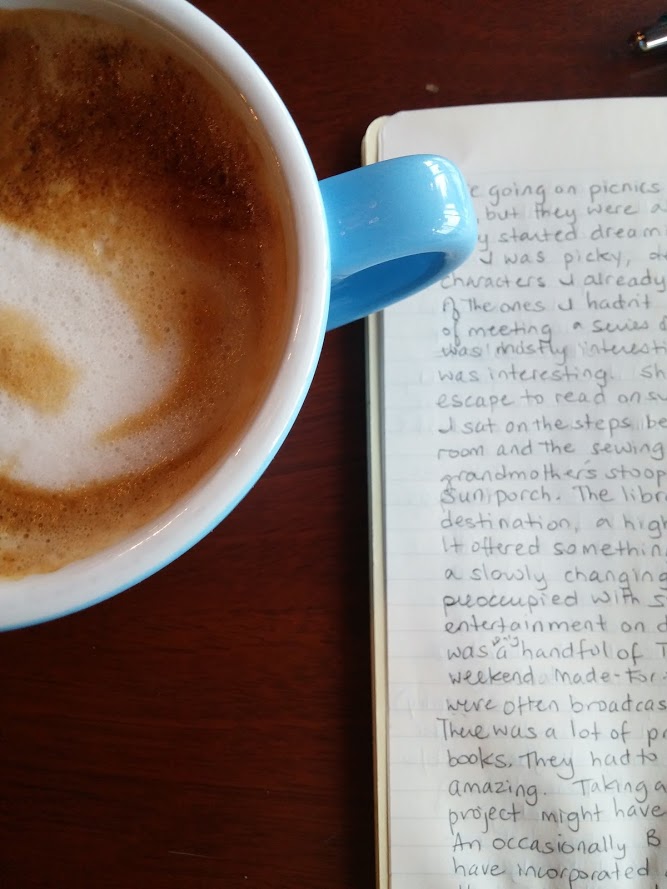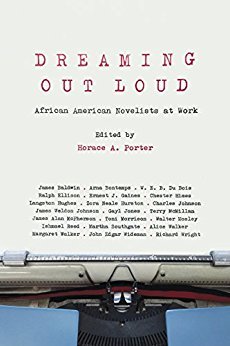Porter states clearly, straight off, that he’s not writing a how-to volume, but “readers will find some references to craft” and “inspiring accounts of vocational dedication”. There are twenty-one creatives included—from MacArthur “genius” Fellowship recipients to best-selling authors—covering about a century of African-American writers at work and including about a dozen women (including Zora Neale Hurston and Martha Southgate). Porter identifies specific essays as being dedicated to the discussion of craft, but throughout readers can benefit from experience and knowledge about the writing life.
As an element of pure pleasure, I thrilled to the talk of reading and libraries in these pieces. To Richard Wright’s daring escapade to gain access to borrowed books, for instance—the way that he recognized his boss in the character of George F. Babbitt in Sinclair Lewis’ Main Street. How he found his mother’s suffering reflected in Dreiser’s novels (Jennie Gerhardt and Sister Carrie). And, even on this matter, there are hints of craft: “The plots and stories in the novels did not interest me so much as the point of view revealed.”
I also warmed to the idea of Terry McMillan discovering Black writers via a textbook called Dark Symphony: Negro Literature in America (particularly Countee Cullen, Langston Hughes, Ann Petry, Zora Neale Hurston, Ralph Ellison, Jean Toomer, Richard Writer and James Baldwin): “To discover that our lives held as much significance and importance as our white counterparts was more than gratifying, it was exhilarating.” This originally appeared as an introduction to a collection of works by Black writers, and Porter includes a second piece pulled from that volume, its prefacing piece by John Edgar Wideman. This kind of attention to detail underscores the idea of community and the value of a sense of belonging.
There are ample opportunities in this volume to consider one’s inspiration to create, an artist’s priorities in the creation process, and the different avenues that different writers and poets travel to explore this terrain. In Gayl Jones’ 1988 essay “About My Work” for instance, she notes:
“I notice people more than landscape. I notice voices.
I think people more than events affect/impact on my creativity.”
This kind of commentary invites readers to consider their own priorities when it comes to observation and what impacts their writing. (I notice people, too, and voices, but events impact my creativity more than individuals.)
Zora Neale Hurston, too, is more caught up in observing people than landscapes. She begins her 1950 essay “What White Publishers Won’t Print” like this:
“I have been amazed by the Anglo-Saxon’s lack of curiosity about the internal lives and emotions of the Negroes, and for that matter, any non-Anglo-Saxon peoples within our borders, above the class of unskilled labor.”
In other words, she’s noticed that we all have blind spots. What an opportunity to explore our own blind spots as individual writers, to consider why certain stories are told and retold while others remain untold or rarely told. To explore the question of perspective and point-of-view and how writers might approach these stories.
Charles Johnson’s contribution is primarily an outline for his notable 1990 novel, Middle Passage—but it’s preceded by a single page of musings on his writer’s notebooks. “I save everything, it’s shameless,” he admits. In just a few paragraphs, he describes his evolving notetaking habits over the years, frequency and content, as well as specific process elements that have contributed to the success of his fiction throughout his career.
This is the kind of volume that I can imagine picking off the shelf across a span of years, sometimes finding one essay more meaningful than another. It’s not a reference text like The Chicago Manual of Style, but it’s a reference of another sort.
Great stuff for writers.
Horace A. Porter. Dreaming Out Loud: African American Novelists at Work. Iowa City: University of Iowa Press, 2015.

